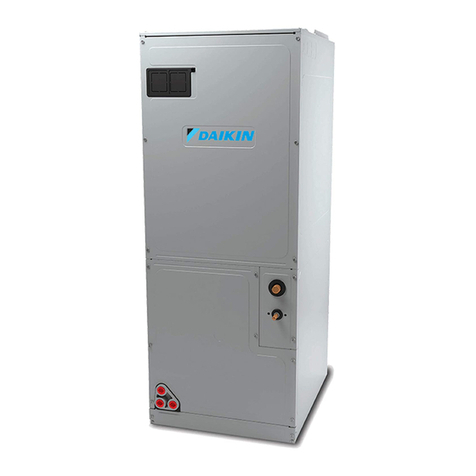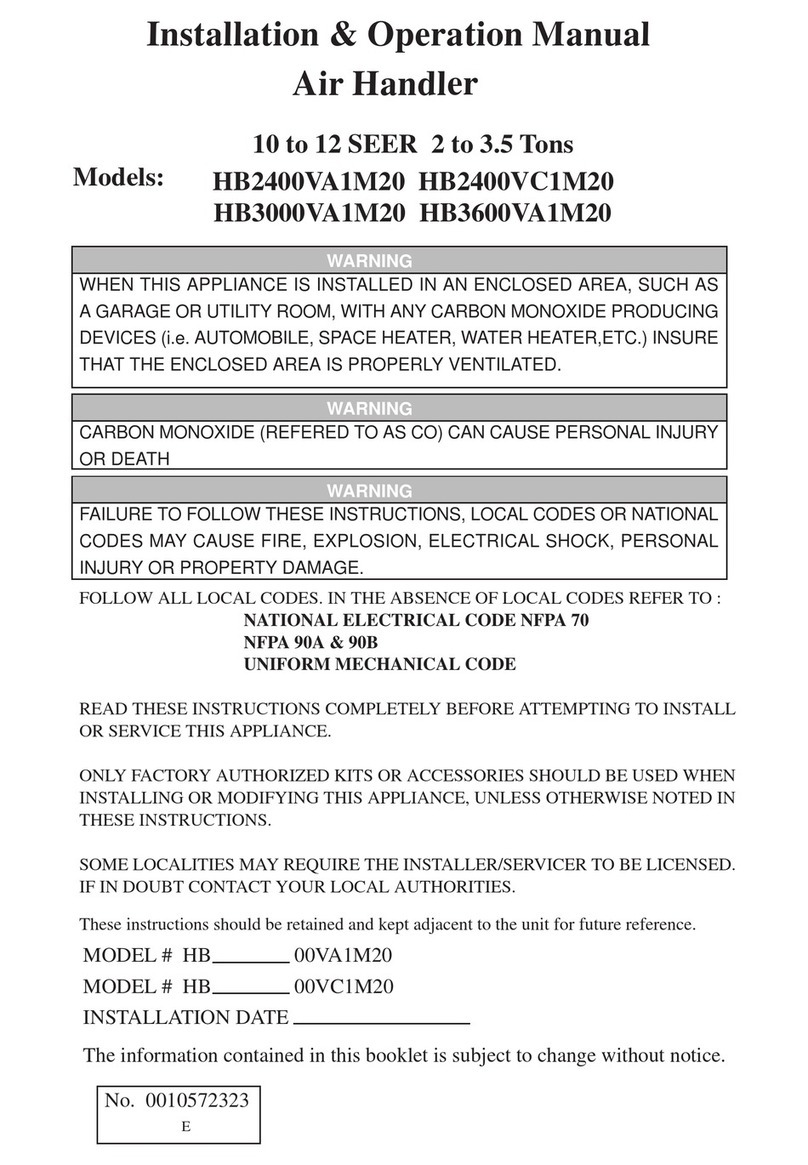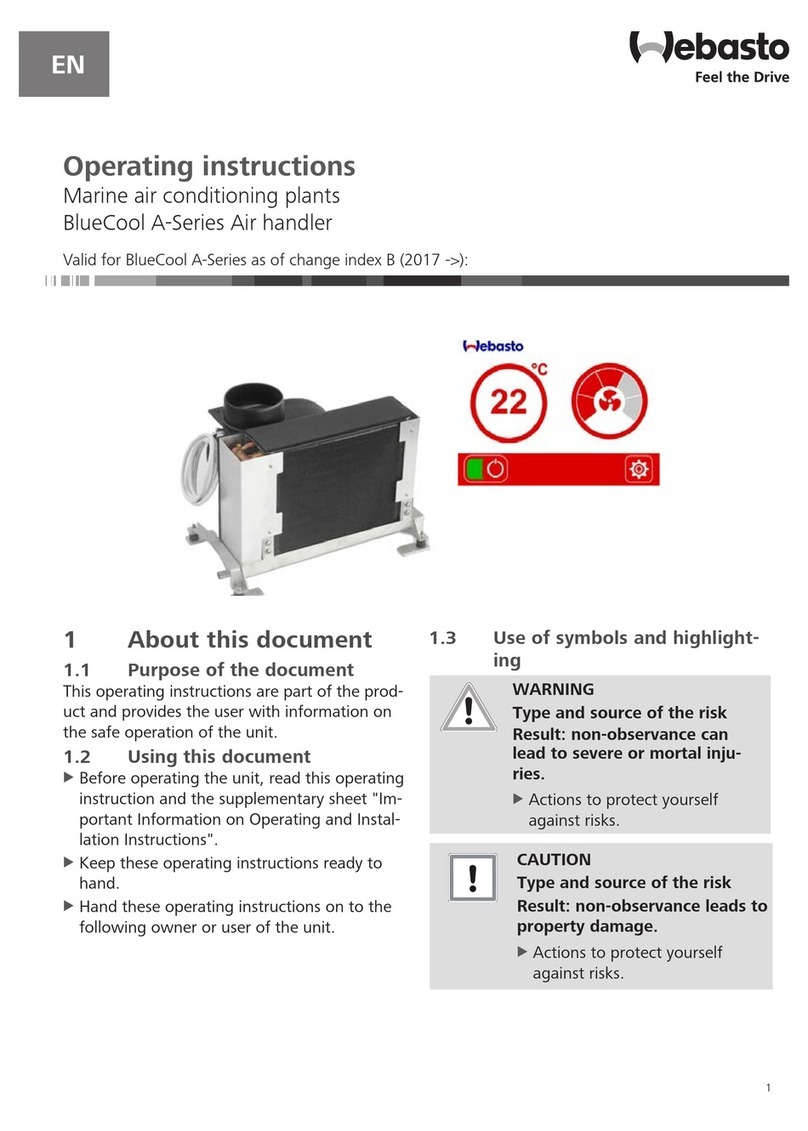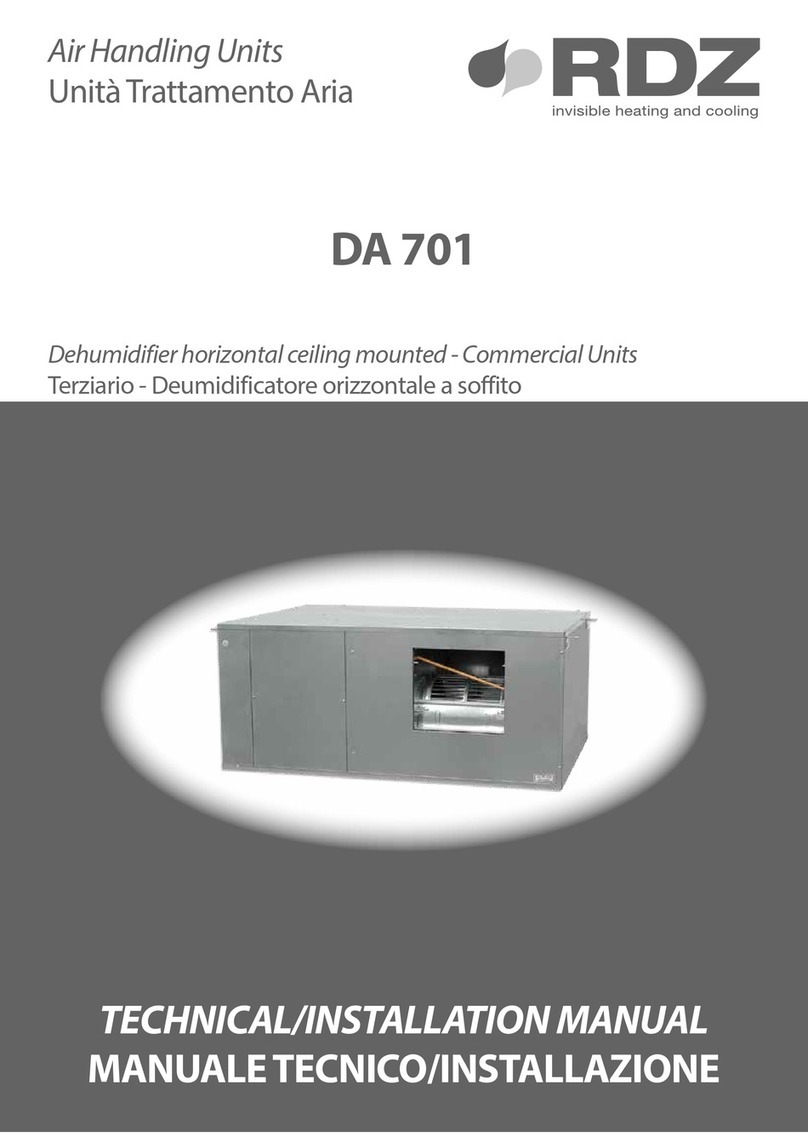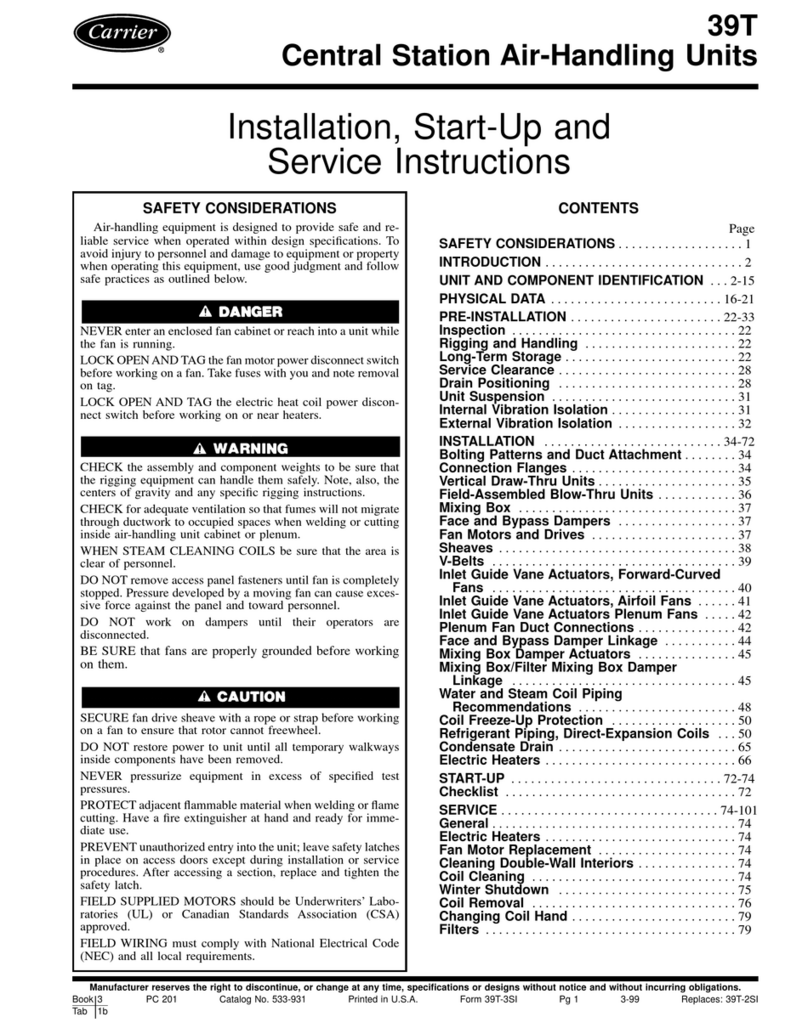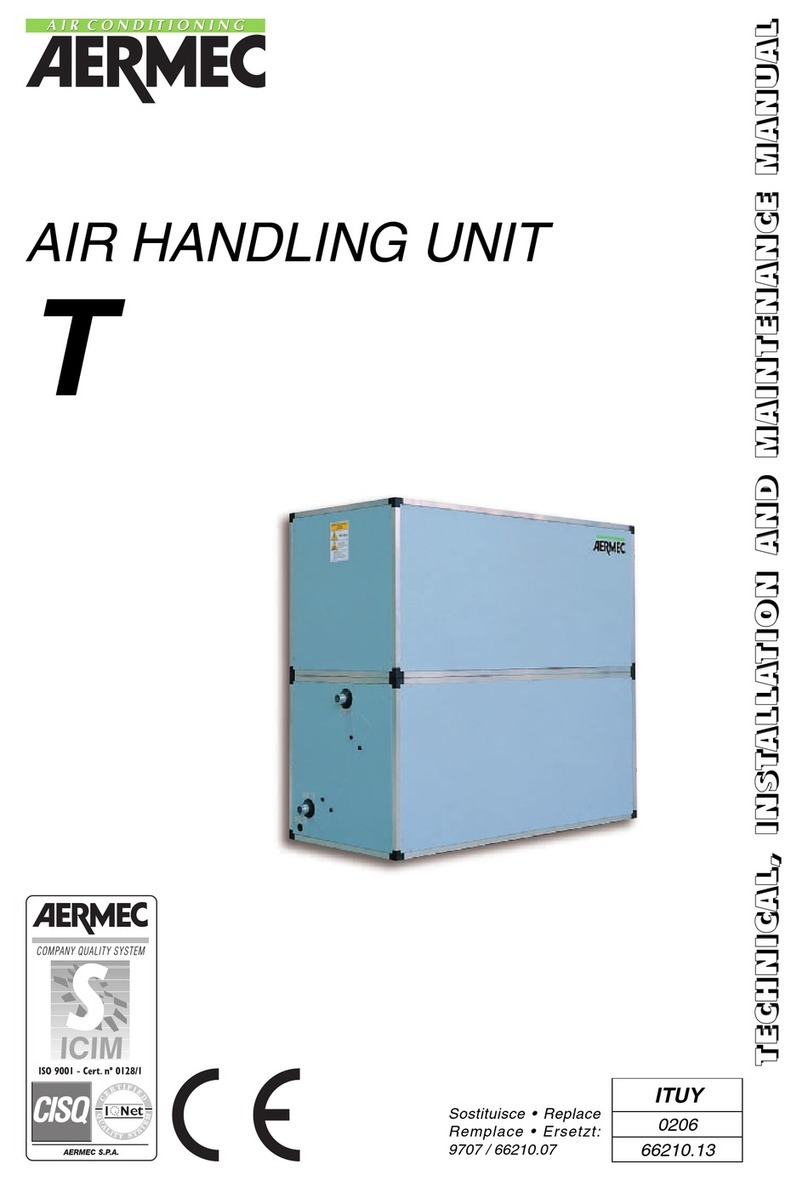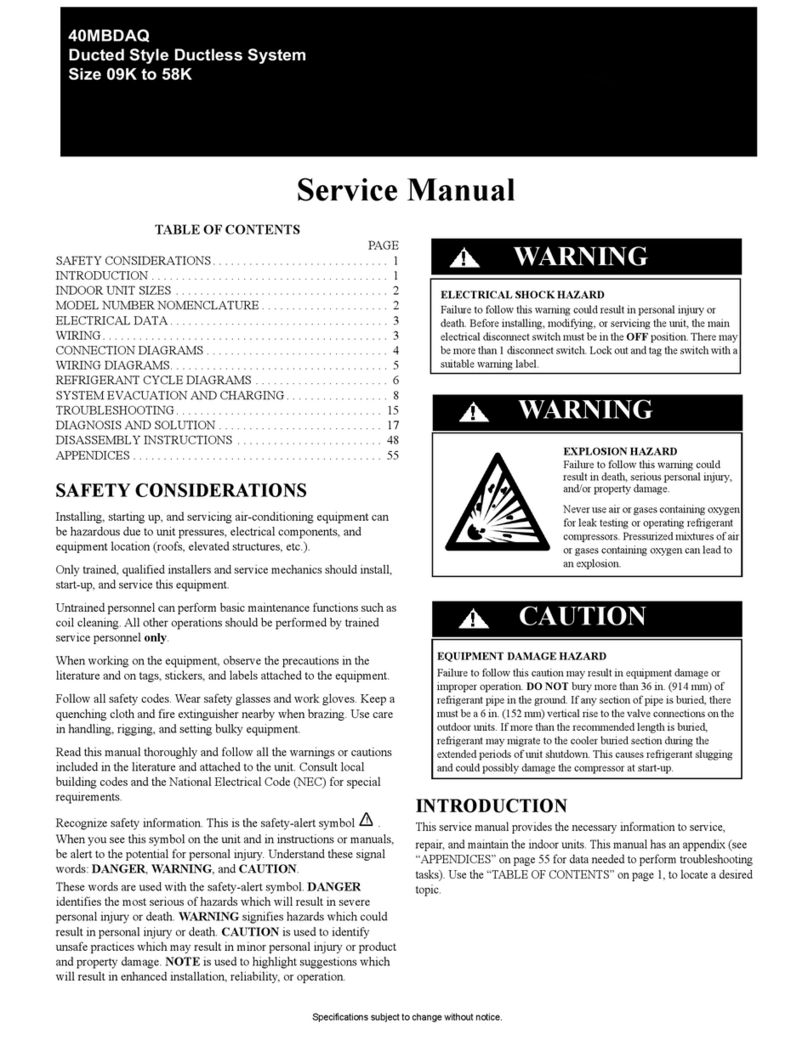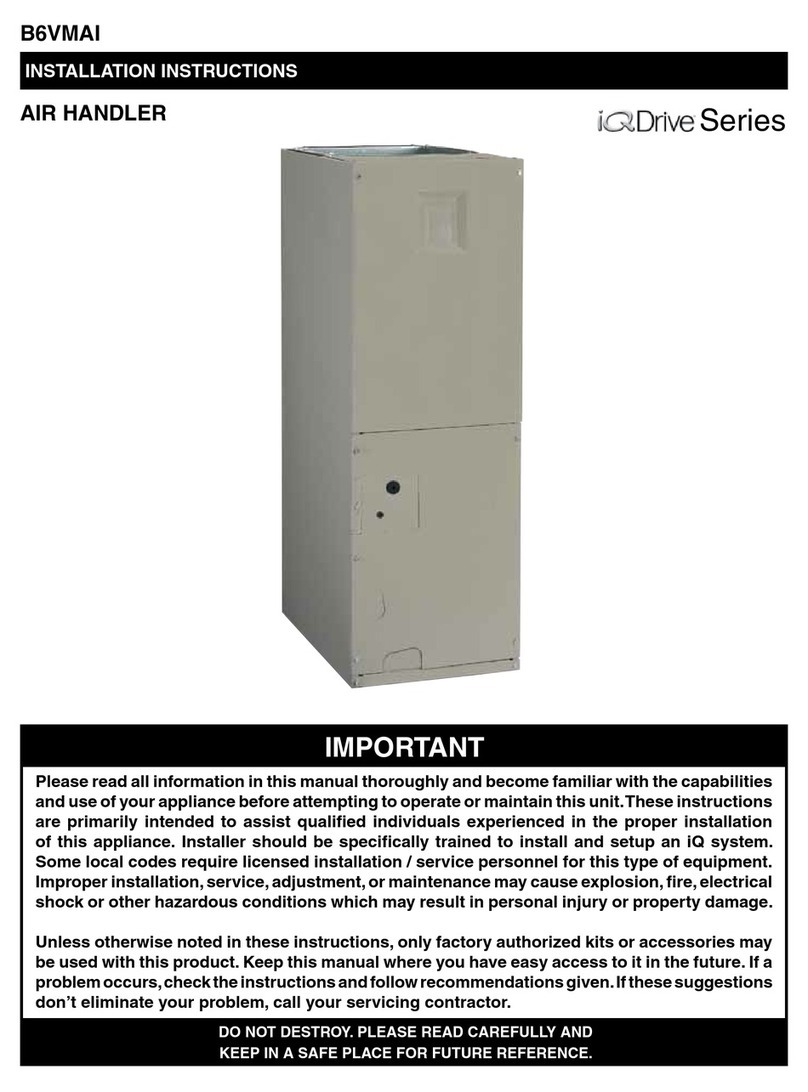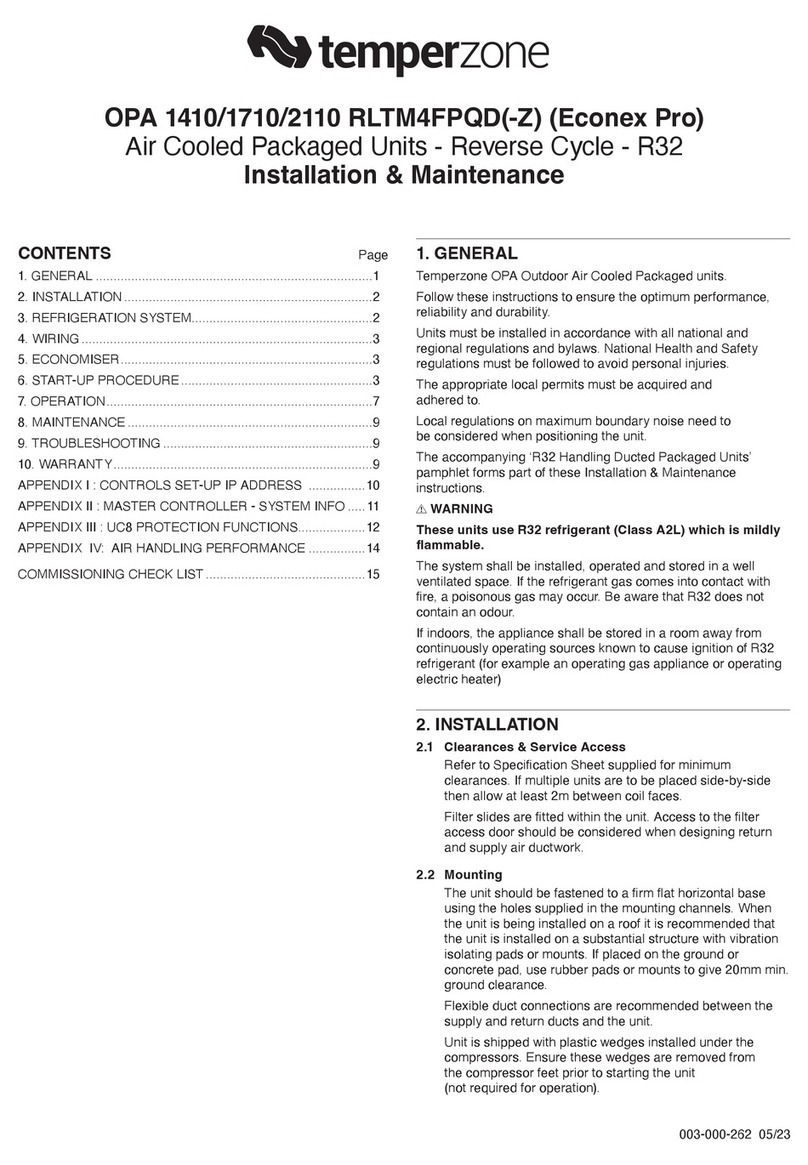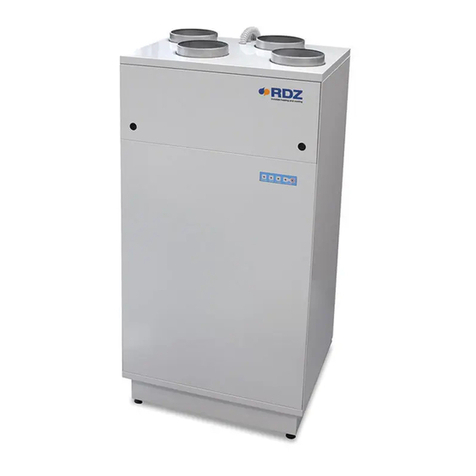
2
ItalianoEnglishDeutscheEspañol Français
ITSLJ 1002 - 5964000_04
Conservare i manuali in luogo asciutto, per evitare il deterio-
ramento, per almeno 10 anni per eventuali riferimenti futuri.
Leggere attentamente e completamente tutte le informa-
zioni contenute in questo manuale. Prestare particolarmen-
te attenzione alle norme d’uso accompagnate dalle scritte
“PERICOLO” o “ATTENZIONE” in quanto, se non osservate,
possono causare danno alla macchina e/o a persone e cose.
Per anomalie non contemplate da questo manuale, interpellare
tempestivamente il Servizio Assistenza di zona.
L'apparecchio deve essere installato in maniera tale da rende-
re possibili operazioni di manutenzione e/o riparazione.
La garanzia dell'apparecchio non copre in ogni caso i costi
dovuti ad autoscale, ponteggi o altri sistemi di elevazione che
si rendesero necessari per effettuare gli interventi in garanzia.
AERMEC S.p.A. declina ogni responsabilità per qualsiasi danno
dovuto ad un uso improprio della macchina, ad una lettura
parziale o superficiale delle informazioni contenute in questo
manuale.
Il numero di pagine di questo manuale è: 44.
OSSERVAZIONI
Store the manuals in a dry location to avoid deterioration, as
they must be kept for at least 10 years for any future reference.
All the information in this manual must be carefully read and
understood. Pay particular attention to the operating stan-
dards with “DANGER” or “WARNING” signals as failure to
comply with them can cause damage to the machine and/or
persons or objects.
If any malfunctions are not included in this manual, contact
the local After-sales Service immediately.
The apparatus must be installed in such a way that maintenan-
ce and/or repair operations are possible.
The apparatus's warranty does not in any case cover costs due
to automatic ladders, scaffolding or other lifting systems neces-
sary for carrying out repairs under guarantee.
AERMEC S.p.A. declines all responsibility for any damage
whatsoever caused by improper use of the machine, and a par-
tial or superficial acquaintance with the information contained
in this manual.
The number of pages in this manual is : 44
REMARKS
Conserver les manuels dans un endroit sec, afin d’éviter leur
détérioration, pendant au moins 10 ans, pour toutes éventuel-
les consultations futures.
Lire attentivement et entièrement toutes les informations con-
tenues dans ce manuel. Prêter une attention particulière aux
normes d’utilisation signalées par les inscriptions “DANGER”
ou “ATTENTION”, car leur non observance pourrait causer un
dommage à l’appareil et/ou aux personnes et objets.
Pour toute anomalie non mentionnée dans ce manuel, contac-
ter aussitôt le service après-vente de votre secteur.
Lors de l'installation de l'appareil, il faut prévoir l'espace
nécessaire pour les opérations d'entretien et/ou de réparation.
La garantie de l'appareil ne couvre pas les coûts dérivant de
l'utilisation de voitures avec échelle mécanique, d'échafauda-
ges ou d'autres systèmes de levée employés pour effectuer des
interventions en garantie.
AERMEC S.p.A. décline toute responsabilité pour tout domma-
ge dû à une utilisation impropre de l’appareil et à une lecture
partielle ou superficielle des informations contenues dans ce
manuel.
Ce manuel se compose de pages: 44
REMARQUES
Guarde los manuales en un lugar seco para evitar su deterioro,
al menos durante 10 años, por si fuera posible consultarlos en
el futuro.
Leer atenta y completamente todas las informaciones con-
tenidas en este manual. Preste particular atención a las nor-
mas de uso acompañadas de las indicaciones “PELIGRO” o
“ATENCIÓN” puesto que, si no se cumplen, pueden causar
el deterioro de la máquina y/o daños personales y materiales.
En caso de anomalías no contempladas en este manual, con-
tacte inmediatamente con el Servicio de Asistencia de su zona.
El aparato debe ser instalado de manera que haga posibles las
operaciones de mantenimiento y/o reparación.
En cualquier caso, la garantía del aparato no cubre los costes
derivados del uso de escaleras automáticas, andamios u otros
sistemas de elevación necesarios para efectuar las intervencio-
nes en garantía.
AERMEC S.p.A. declina cualquier responsabilidad por cual-
quier daño debido a un uso impropio de la máquina, o bien a
una lectura parcial o superficial de las informaciones conteni-
das en este manual.
Número de páginas de este manual: 44.
OBSERVACIONES
Bewahren Sie die Gebrauchsanleitungen min-
destens 10 Jahre für eventuelles zukünfti-
ges Nachschlagen an einem trockenen Ort auf.
Alle in diesem Handbuch enthaltenen Informationen
aufmerksam und vollständig lesen. Insbesondere auf die
Benutzungsanweisungen mit den Hinweisen "VORSICHT"
oder "ACHTUNG" achten, da deren Nichtbeachtung Schäden
am Gerät bzw. Sach- und Personenschäden zur Folge haben
kann.
Bei Betriebsstörungen, die in dieser Gebrauchsanweisung nicht
aufgeführt sind, wenden Sie sich umgehend an die zuständige
Kundendienststelle.
Das Gerät so aufstellen, dass Instandhaltungs- und/oder
Reparaturarbeiten durchgeführt werden können.
Die Garantie des Gerätes deckt in keinem Fall Kosten für
Feuerwehrleitern, Gerüste oder andere Hebesysteme ab, die
sich für die Garantiearbeiten als erforderlich erweisen sollten.
Die AERMEC S.p.A. übernimmt keine Haftung für Schäden aus
dem unsachgemäßen Gebrauch des Gerätes und der teilweisen
oder oberflächlichen Lektüre der in diesem Handbuch enthal-
tenen Informationen.
Die Seitenanzahl diese Handbuches ist: Nr. 44 Seiten
HINWEISE





